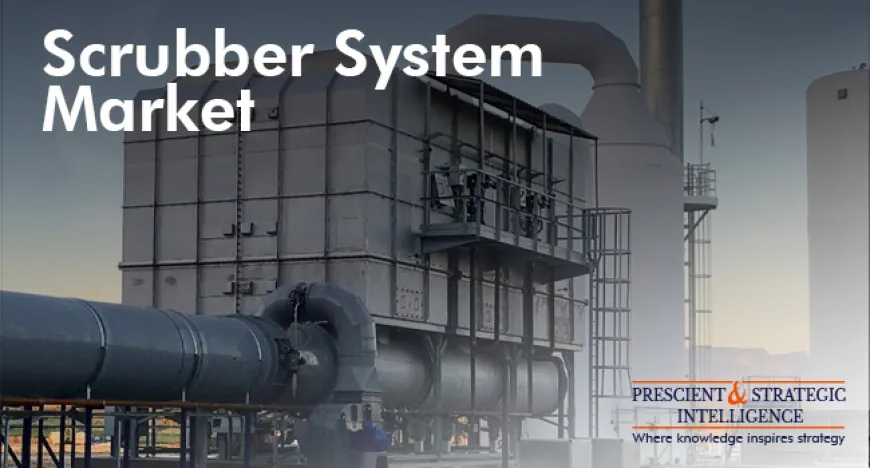How Scrubbers Function To Remove Air Pollution?
Discover how scrubbers work to remove harmful pollutants from the air. Learn the process and benefits of these devices in improving air quality.

Lessening environmental effects is a vital priority for several businesses, for practical, legal, and ethical factors. As air pollutants can be injurious, their effective elimination is thinkable with a wet air scrubber. Wet scrubbers provide a contained, efficient solution for eliminating undesirable air pollutants, branding wet scrubbers the best choice for air pollution control.
They can eliminate organic and inorganic contaminants, such as those that source illness, diminish ozone, or disturb environments.
The scrubber system market is experiencing growth and is projected to reach USD 8,055 million by 2030.
What Are Wet Scrubbers?
In the manufacturing sector air scrubbers can be either wet or dry. Dry scrubbers utilize solid materials for contaminant elimination, while wet scrubbers utilize liquid solvents. Both eliminate gas pollutants and associated odors from industrial exhaust systems.
Altogether, wet scrubbers attain a higher level of pollutant elimination than dry scrubbers. They’re important for industrial engineering or wastewater treatment amenities, as they save pollutants from polluting outside air. Any business that makes air pollutants may utilize wet air scrubbers of several designs and buildings.
What is a dry scrubber?
A dry scrubber system is the utmost popular type of scrubber which is intended to eliminate damaging materials from contaminated gases of industrial exhaust or flue gas stream before they are free into the atmosphere. It is mainly utilized to remove acidic gases that contribute to acid rain by using a collection of dry materials known as “sorbent”, like alkaline slurry.
Inorganic Gases, Fumes, and Vapors
Several industries utilize scrubbers in order to regulate airborne gases, fumes, and vapors. Such inorganic impurities can source ecological disturbance and opposing health effects if they enter the atmosphere in huge sizes. The inorganic gases a wet scrubber can eliminate from the air include some of the injurious air pollutants, as chosen by the Environmental Protection Agency. Some of the most popular pollutants include:
• Chromic acid.
• Hydrogen sulfide.
• Ammonia.
• Chlorides.
• Fluorides.
• Sulfur dioxide.
Wet vs. Dry Scrubbers
Although both kinds of scrubbers have a similar purpose which is eliminating toxic contaminants from industrial exhaust, the way they work is a bit different. As their names propose, a wet scrubber utilizes a solution, usually water or other water-based fluids, to soak the particulates and composites in the exhaust stream which ultimately leads to weighing them down and eliminating them from the gases.
A dry scrubber on the other side, targets to eliminate contaminants from exhaust gases without the utilization of liquid. it utilizes dry components, which are transported into contact with the contaminated stream, that then react, and either defuse the hazardous compounds or captivate them and turn them into a different, less damaging, matter.
The surface area in both kinds is very dangerous. While dry industrial scrubbers usually are not skilled in attaining the same level of pollutant elimination as wet scrubbers, they are better suitable for certain applications, mainly in amenities that do not have the infrastructure in place to correctly handle formed wastewater.
Hence, the key drivers of the scrubber system industry are the growing execution of severe environmental rules by governments to restrict air pollutants, the increasing count of manufacturing amenities that result in the release of numerous pollutants and dust particles, and the rising knowledge of air quality management solutions.
Source: P&S Intelligence












